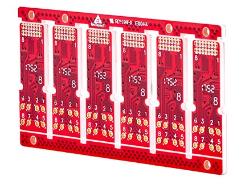As with cooking, errors can occur in electronic design, even for the most meticulous designer. But some errors are so serious that you have to scrap the entire printed circuit board (PCB) and start over. When you wait patiently for the prototype PCB layout to test the circuit, this can cause costly delays in the product development cycle.
Critical design errors in PCB design of PCB manufacturing industry
We all hate making mistakes. But in reality, it takes two to three attempts to get the perfect design. As long as we fix the errors in the early design by simply cutting off the tracks or jumpers, the impact on the development process will be minimal. The same cannot be said about the following errors that almost always ruin your printed circuit board.
1. Use the wrong footprint
Although most passive components have through-hole and surface-mount forms, integrated circuits (ICs), especially ICs with special functions, can only be produced in a few package types. Confusing small outline integrated circuits (SOIC) and shrinking small outline packages (SSOP) may lead to attempts to mount smaller ICs on larger footprints, and vice versa.
Remember to verify the package type of your components by thoroughly checking their data sheets. Don't make assumptions and make sure that the size of the IC and its spacing dimensions are correct. I learned my lesson when I mistakenly used the "narrow" version of SOIC, because the "wide" version has the same pitch size.
Use the correct IC components in the PCB design process to avoid design errors, which will affect the design footprint.

2. Misaligned address bus
High-density memory requirements mean the use of parallel flash memory or static random access memory (SRAM). Have to deal with up to 23-bit address and 8-bit data signals. Errors in matching the address pins of the microcontroller to the memory components can cause the prototype to be unusable or take days to cut and reconnect the signals with jumpers. To avoid this, it is necessary to fully understand the addressing bus of the microprocessor and how each memory chip should be connected.
3. Bad ground plan design
In a simple digital circuit, the effect of a correct ground plane design may not be obvious. However, if you ignore ground plane best practices for analog or mixed circuit design, you may have a batch of filled but unacceptable circuit boards. This can cause interference and crosstalk, so it is necessary to make better designs quickly.
Although I was lucky to be able to salvage the poorly grounded PCB, now I make sure that the ground plane design can be used correctly in future designs. Remember to separate the analog and digital grounds by one point when appropriate, and consider the current flow path.
4. Incorrect mounting hole
Mounting holes help reduce electromagnetic interference (EMI). However, if your mounting hole coordinates are closed, then a functional circuit board will not be able to be fixed to its housing. Make sure your coordinates are accurate, otherwise there may not be a clear way to fix the screws.
For the design of mounting the printed circuit board to the housing, it is important to start the PCB layout and place the mounting holes on the right coordinate before filling other components.
Drilling is invalid when the drilling position is wrong.
5. Excessive current density on thin copper wire
What happens when you cover all benchmarks by performing power budget calculations at the sub-circuit level? The error is failure to consider the total current through the primary voltage signal track. Another error is failure to provide sufficient copper width. These errors can cause overheating, or in some cases, lead to a complete disconnection of the copper. The correct power budget analysis should clearly show the required track width.